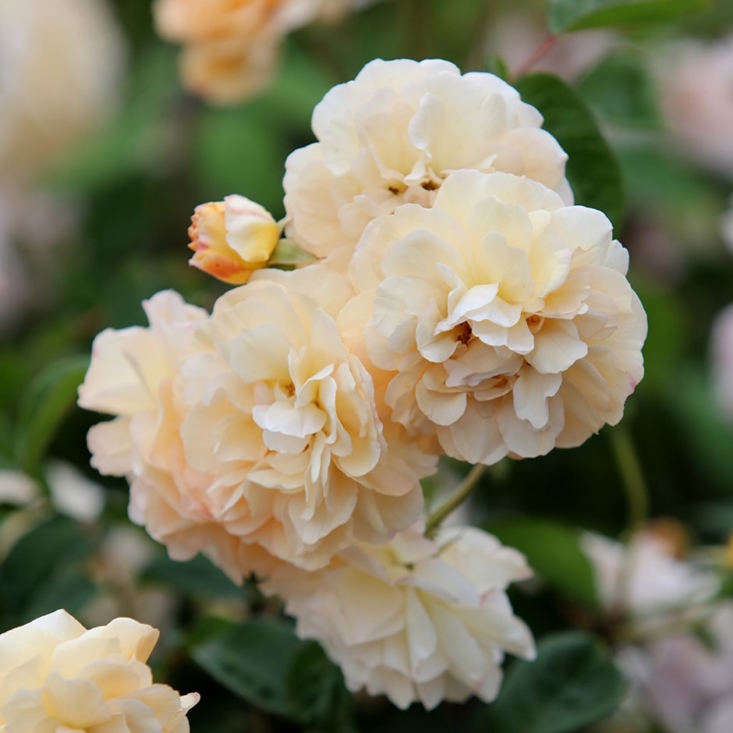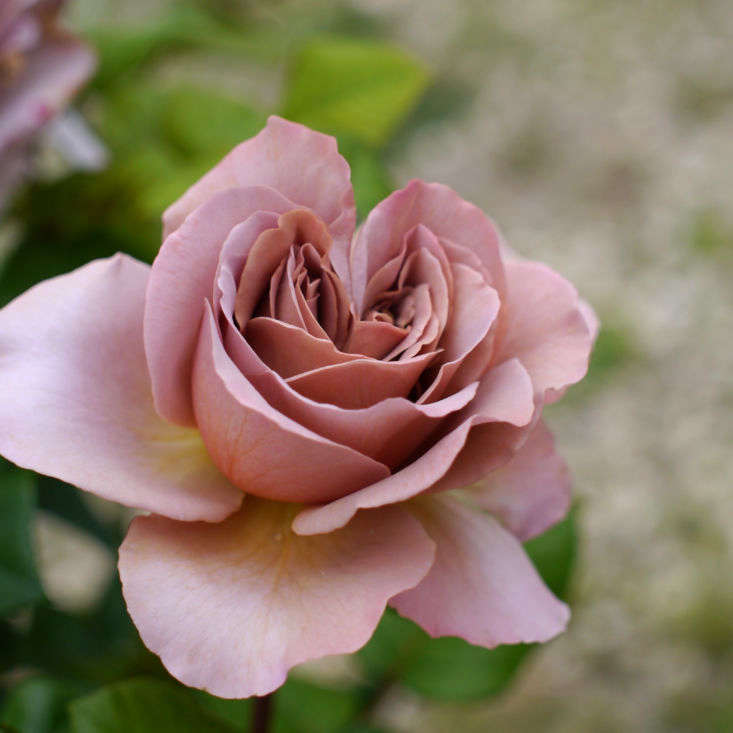Is there any flower more abundant in sensory overload than a rose? Good looks, delicious scent, wonderful for cutting, easy to grow (so long as you give them a good mulch every winter, for they are hungry plants), and, depending on which you choose, a long and glorious flowering season. Few perennials can stop you in your tracks like a mature rose in full bloom rambling over an aged outbuilding or climbing up the walls of a country house—or any other house for that matter. Roses pretty much tick all the boxes.
But for all their good points, roses also may seem like complicated plants to understand. For a start, there are more than a hundred species, which have thousands of varieties in almost as many colors, all of which seem to have slightly different habits and requirements—and if you are choosing roses, it’s very much a case of selecting the right plant for the right place.
Where to start? Most roses are either shrubs, ramblers, or climbers (and to add to the confusion, some shrub roses can also be trained to grow as a climber). Roses are woody perennials with stems that do not die back in winter—and over the years, those stems will look more like gnarly branches (and will weigh far more than soft stems, requiring a sturdy support if your rose is a climber).
Read on to learn everything you need to know about different kinds of roses, how to select the best rose for your landscape, and how to make sure it thrives after your plant it.
Shrub Roses

The most prolific group is the modern shrub rose, which includes the majority of the roses you might pick up in a nursery or garden center. The term covers a very diverse set of bushy plants that were largely bred in the early 20th century and are often hybrid musks through to more modern hybrids.

Shrub roses come in many different sizes from a couple of feet tall (these ground cover roses include the sugary pink Surrey rose) to more than five feet.

English Roses

Old Roses

Old Roses are another broad group that includes many old varieties of Gallica, Damask, Alba, and Centifolia (including the intriguing Moss roses) that predate the mid-19th century. ‘Charles de Mills’ (1790) and ‘Souvenir de la Malmaison’ (1843) are typical of these old roses. Rosa mundi, which predates them all by many centuries, is a once-flowering Gallica rose with masses of striped pink flowers.

Gallica, Damask, Alba, and Centifolia roses tend to be once-flowering while Bourbons, which are also considered an old rose, can often be repeat-flowering. These roses are valued for their exquisitely beautiful blooms and fragrance. Rosa mutabilis, a tea rose bred in 1894, is rare in combining a long flowering season with extraordinary blooms that range from apricot and copper to deep pink.
Hybrid Teas and Floribundas

Hybrid teas were first created when a tea rose (any scented cultivar of Rosa × odorata) was crossed with a hybrid perpetual rose (a Bourbon crossed with nearly any other rose). Hybrid tea roses are instantly recognizable for their distinctive shape and large pointed buds. They come in a huge palette of colors—some garish—and grow on stiff stems. Hugely popular in the ’40s and ’50s, these are often the roses we associate with granny’s garden. Floribunda roses are also the result of a hybrid tea cross—in this case with Polyantha roses—and have clusters of big flowers that usually have a long flowering season. They are less known for their scent. ‘Iceberg’, bred in 1958, is typical of this type of rose.
Wild Roses

Ramblers vs. Climbers

What’s the difference between a rambler and a climber? Quite a lot, actually. All climbing roses will reach for the skies (although some climbers are relatively short, growing only to six or eight feet, while other more vertiginous cultivars such as ‘Cecile Bruner’ or ‘Madame Alfred Carriere’ can happily clamber up to the second story of a house), and they tend to have larger flowers and are often repeat-flowering. Enduring favorites such as ‘New Dawn’ are popular for a reason, with beautiful pink flowers, healthy growth, and delicious fragrance.

Ramblers meanwhile tend to be vigorous with more delicate clusters of blooms that often only flower once—although many modern ramblers will flower more than once. Choose a rambler if you want a rose to run rampant along hedges or over outbuildings and old sheds. The beautiful ‘Frances E Lester’ is a delicate, creamy rose with delicious fragrance and beautiful orange hips. The soft pink ‘Paul’s Himalayan Musk’ is another favorite, famed, as the name suggests, for its heady fragrance.

The notoriously thuggish ‘Kiftsgate’ can clamber 40 feet up into a tree, where it will drip in huge clusters of creamy white flowers in midsummer. Ramblers need very little attention while most climbers are usually trained and pruned in the winter wherever you are growing them—over pergolas or up fences and walls.
Noisettes

Special mention should be given to the exquisitely pretty Noisettes, bred from tea roses, which can be bushy or vigorous climbers that produce huge sprays of small dainty flowers often in pretty blush tones.
How do you choose a rose?

First of all, think about what you want it to do: If you want to use it in a mixed border then most shrub roses are well suited, but consider its eventual size when you are planning its position. If you are choosing a climber or rambler to cover a pergola or wall or even a building, then choose the right variety for the scale of the job. The right rose will largely be down to your personal preference of color, scent, and the shape of the blooms (which again ranges widely from delicate open cups or frothy pompoms to the delicate singles). There are some roses that seem to do it all—’Lady Emma Hamilton’ has beautiful bronze foliage, exquisite pink-tinged orange flowers, and the most delicious fruity scent. It’s hard to beat.
For more of our favorite (and highly perfumed) roses, see:
- Roses: A Field Guide to Planting, Care & Design
- DIY Climbing Roses: From Trellis to Vase on Cape Cod
- Gardening 101: How to Prune Roses
- The 7 Best Climbing Roses for Your Garden
N.B.: Considering some new plants for your garden? Our Garden Design 101 guides can help:
- See Peony 101 for showstopping blooms.
- Need more information on planting, care, and design? Use our Perennials 101 guide for everything you need to know.












Have a Question or Comment About This Post?
Join the conversation